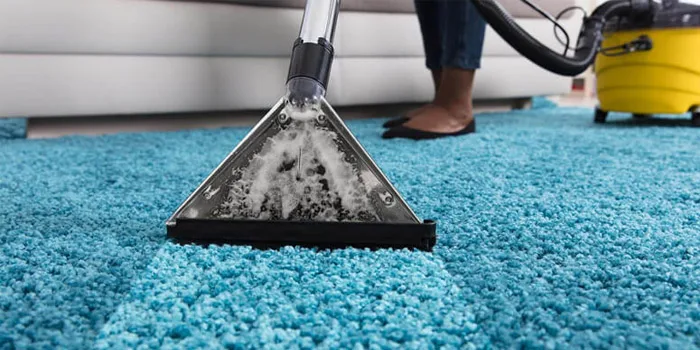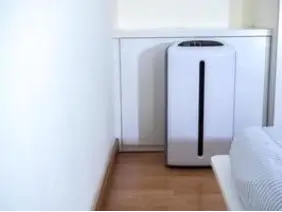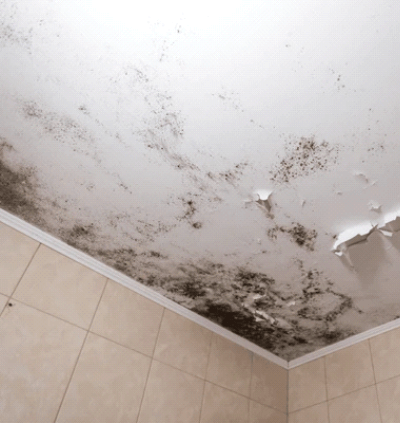No one has ever lifted the top of their toilet tank unless it stops working. If you’re one of those people, lift the lid off your tank to have a look inside. Did you see mold?
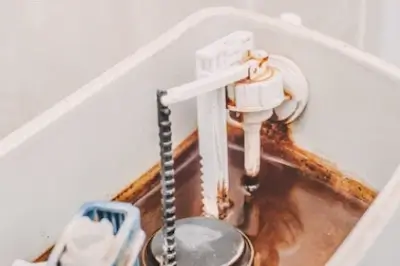
It has been sitting there for a long time. Why? Because it is probably the darkest and the dampest spot in your entire house. It’s directly above the water source and has a lot of nutrients to feed and grow on.
Mold in the toilet tank can be of different colors. If you see black spots, yellow, green, or white spots, they’re all mildew and fungus types. There are several reasons for this growth and can easily be combated.
Check your toilet today, and if you’re disgusted by the mold growth, call 24/7 Service Pros for help.
Key Takeaways
Mold in toilet tanks can come in various colors and textures, and it thrives in a moist environment due to factors like poor ventilation and organic matter for it to feed on.
You can use natural cleaners like vinegar and baking soda, chlorine bleach, or hydrogen peroxide to effectively remove mold from your toilet bowl, with regular maintenance and cleaning to prevent regrowth.
Preventing mold includes regular cleaning, proper ventilation, and humidity control in your bathroom, alongside checking for leaks in plumbing to keep the environment unfriendly for mold.
What Causes Mold in Toilet Bowl?
There are several reasons why your toilet has become a breeding spot for all types of mold. A lack of light, warmth, and dampness are at the top of the list. But there’s more to it. Following are some common causes of mold spores in toilet tanks:
Moisture
A toilet is a place where humidity is almost always high. You might have encountered mold in your bathroom every once in a while due to excess moisture.
Toilets are not immune to this problem. Since no one opens them, they go undetected. A water leak can also increase moisture.
Light and Temperature
There isn’t a lot of light in the toilets, especially sunlight. Inside the toilet tank, it’s pitch dark. This lack of light creates a cozy environment for mildew to thrive. Since tanks are covered, they remain at room temperature for long periods.
These factors lead to mold spores in the toilet.
Poor Ventilation
A lack of proper ventilation keeps moist air trapped in your toilet. Now imagine the amount of humidity inside a closed tank. Yes, it’s extremely humid.
In warmer seasons, this humidity and lack of ventilation create an ideal climate for mold growth inside a covered toilet tank.
Stagnant Water
If you’ve been away for a long time or you’ve stopped using a bathroom, the water in the tank will grow stagnant. This stagnant water along with high humidity, warm temperature, and darkness, will spread mold in the toilet rapidly.
Is Black Mold in Toilet Dangerous?
Yes, black mold is dangerous regardless of its location. You might think that since it’s in the tank, it can’t harm you. Remember that black mold releases toxins that spread in the air. Spores of all mold types are also very easily scattered everywhere because they’re microscopic. Use air purifiers and dehumidifiers to remove black mold.
Despite being trapped inside a tank, the toxins and spores of mold can come in contact with air through gaps, openings, fixtures, and pipes.
Thus, the silent killer inside the toilet is causing health issues outside too. Common health problems caused by black mold include asthma, stuffy and runny nose, itchy or watery eyes, irritated throat, and skin allergies.
How To Prevent Mold in Toilet Tanks?
If you haven’t found any mold in your toilet yet, take preventive measures to treat mold. If you have, remove it and make sure you follow these tips to prevent mold in the toilet:
Regularly flush the toilet even if it’s not in use.
Do not let urine or stool sit inside the toilet bowl for too long.
Clean your tank with bleach, chlorine, or vinegar once a week.
Open and dry out the tank once a week.
Fix leaks and cracks in your toilet tank.
Ventilate your bathrooms regularly.
Run a dehumidifier twice a week in your toilet.
How to Get Rid of Mold Spores in Toilet
Getting rid of mold in the toilet tank is easier than ceiling mold, floor mold, or even attic mold. If you have previously dealt with mold in tough spots, the toilet bowl will be an easy task for you.
If you have a commercial mold cleaner from your previous mold remediation, you can use it.
However, if you don’t have a cleaner, you can use household products to get rid of it. Things that work well are chlorine bleach, hydrogen peroxide, liquid borax, and vinegar. All you need to do is use the right amount and put it in the bowl and tank.
Cleaning the Toilet Tank and Bowl
Before you kill mold using a solution, you need to empty the tank.
Turn off the water supply and vigorously clean the tank with a toilet brush
Rinse after scrubbing.
Fill the tank with water and pour the solution in the tank as well as the bowl.
Let it sit for 30 minutes and then flush twice or thrice.
Use Vinegar
You might have used diluted vinegar previously to kill mildew. But in the case of a toilet bowl, you need undiluted vinegar.
Pour one cup of white vinegar into the toilet bowl and another into the tank. Let it sit for half an hour and then scrub the bowl and tank well. Lastly, flush it.
Use Bleach Solution
Mix one part bleach and 10 parts water. Pour this diluted solution into the tank and the bowl. Let it sit for 30 minutes. Take a toilet brush and scrub the tank as well as the bowl with it. Flush thrice.
Use Hydrogen Peroxide
Hydrogen peroxide can be used to kill mold in toilet tanks. Pour one cup into the tank and another cup into the bowl.
Let it sit for about 15 minutes before you scrub everything off. Once you have scrubbed the tank and the bowl, flush twice or thrice.
Using Baking Soda and Vinegar
If you’re a fan of the natural approach, baking soda, and vinegar are your trusty allies against the moldy invasion. Here’s how to use them:
Pour a cup of white vinegar into the tank.
Sprinkle baking soda over the vinegar.
Let the mixture fizz and react for about an hour.
Give the tank a good scrub.
Go back for a final vigorous scrub.
This dynamic duo will cause a fizzing reaction that’s bad news for mold. Let the concoction work its magic for an hour, then give the tank a good scrub.
After waiting another 15 minutes, give the throne a royal flush to rinse away the moldy mess. And for an ounce of prevention, add a little vinegar to your tank each week to keep future mold gatherings at bay.
Preventing Future Mold Growth in Toilet Tanks
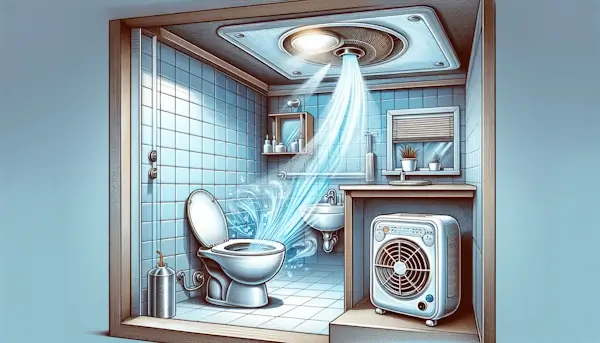
Ever heard the saying ‘an ounce of prevention is worth a pound of cure’? Well, that’s the golden rule when it comes to keeping mold out of your toilet. A mix of regular maintenance, smart ventilation, and eagle-eyed plumbing checks can keep your toilet tank mold-free and your bathroom fresh as a daisy.
So, what’s the game plan? Keep air flowing, keep it clean, and keep an eye on those pipes – because the best way to fight mold is to make sure it doesn’t feel at home in the first place.
Regular Toilet Maintenance
Consistent toilet tank patrols are your first line of defense against mold. Make a habit of checking for any moldy scouts and evict them before they call for reinforcements. A thorough wipe-down with the right cleaners – done regularly – will keep your bathroom’s fortress walls impenetrable to mold.
And remember, a little vigilance goes a long way; keeping your eyes peeled for any signs of mold in the affected area during your routine bathroom clean-up can make all the difference.
Proper Ventilation and Humidity Control
Mold thrives in the steamy, post-shower atmosphere of a bathroom. The solution? Crank up that exhaust fan and throw open the windows to let the air do its thing. Exhaust fans are especially handy for whisking away moisture-laden air during and after those hot showers. If humidity’s still hanging around, consider a dehumidifier to keep the moisture in check and mold at bay.
A combo of fans, open windows, and dehumidifiers is like a trident that keeps the dampness – and mold – at arm’s length, while also reducing the presence of fine particles.
Mold on Other Bathroom Surfaces
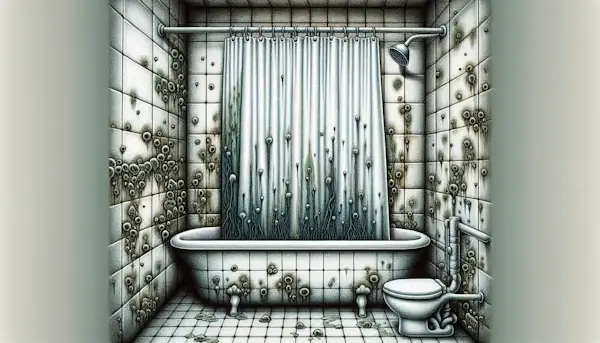
Your toilet tank isn’t the only hotspot for mold; this unwelcome guest can also crash the party on other bathroom surfaces. From shower curtains to tiles and even walls, mold can take hold anywhere moisture lingers. It’s a silent invader, spreading spores and potentially leading to health issues if not addressed.
With a little know-how and the right cleaning regimen, you can keep your entire bathroom mold-free and sparkling clean.
Shower Curtain Mold Prevention and Removal
To keep your shower curtain clean and prevent mold, follow these steps:
After each use, wipe down the shower curtain with a towel or sponge to remove any moisture.
Spread out the shower curtain to allow it to air dry completely.
If you notice any mold or mildew spots, clean them with a mixture of equal parts vinegar and water.
Consider using a shower curtain liner to provide an extra layer of protection against mold. By following these steps, you can keep your shower curtain clean and mold-free.
Wash them regularly in the laundry to remove any mold that does sneak in and keep your shower space fresh and inviting.
Grout and Tile Mold Management
Tiles and grout are like mold’s favorite dance floor – porous, moist, and often overlooked. But with proper cleaning and maintenance, you can keep mold from busting a move in your bathroom. Here are some tips:
Use a simple hydrogen peroxide and water mix for grout mold removal
Use bleach for non-porous tiles
After cleaning, make sure to dry the surfaces thoroughly
Consider sealing the grout to prevent future mold growth
By following these steps, you can keep your bathroom mold-free.
Regular cleaning and moisture control are your best moves in this grout and tile tango.
Wall and Ceiling Mold Solutions
Don’t forget to look up – mold loves to make itself at home on your bathroom walls and ceilings, too. But you’re not defenseless. Mold-resistant paint acts like an invisible shield, keeping those spores from taking root. And just like with tiles and grout, the secret to a mold-free bathroom is in managing moisture and keeping humidity levels low.
Use these strategies, and your bathroom will stay as clean on the top as it is on the bottom, including when you clean the toilet.
Conclusion
Cleaning the toilet tank is relatively easier, but if not done properly, mold will grow back again. To make sure that the issue doesn’t arise again, use borax, bleach, vinegar, hydrogen, peroxide or baking soda.
However, dealing with toilet mold is just as dangerous as any other part of the house. Call 24/7 Service Pros to remove mold in the toilet bowl or any other part of your house.
If the mold keeps coming back, there is mold or water damage in other parts of the house or toilet.
Which Areas We Serve in South Florida?
- Hollywood
- Davie
- Miami Beach
- Weston
- Hallandale Beach
- North Miami Beach
- Sunrise
- Tamarac
- Coconut Creek
- Fort Lauderdale
- Miami
- Boca Raton
- Hialeah
- Margate
- Pembrock Pines
- Dania Beach
- Lauderhill
- Delray Beach
- Pompano Beach
- Deerfield Beach
- Coral Springs
- Plantation
- Doral
- Aventura
- Miramar
- Sunny Isles Beach
Frequently Asked Questions
Mold grows in your toilet tank due to moisture buildup, which can be caused by factors like high humidity, poor ventilation, leaks, and infrequent cleaning. These conditions provide a suitable environment for mold to thrive.
You should clean your toilet tank every 3-6 months to prevent mold growth. If you live in a humid area or notice mold sooner, consider cleaning it more often.
Yes, mold in your toilet tank can make you sick if you are sensitive or have health conditions. It’s important to remove the mold promptly and safely to avoid any potential risks.
Yes, it is safe to use chlorine bleach in your toilet tank to remove mold, but make sure to dilute it according to instructions, ventilate the area, and wear protective gear to avoid inhaling fumes.
If you notice visible mold, a musty odor, or experience increased allergy symptoms in your bathroom, it’s likely that you have a mold problem that needs to be addressed. Take action to address it as soon as possible.

